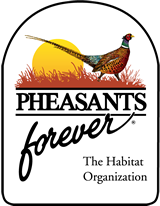 Food plots encouraged by PHIP encompass two types of projects, including, plots that are seeded to a forage and grain sorghum mix, and those that chapters now refer to as “natural” food plots, which consist of annual forbs such as kochia, annual sunflowers and giant ragweed. Both types of plots serve a similar purpose -create a dense, tall, secure habitat that also contains a food component, either in the form of a grain like corn or sorghum, or a seed, like annual sunflower. Chapters can either plant the sorghum mix to provide a food plot, or depending on location, can often disk or mechanically disturb a plot to encourage annual forbs to grow. Commonly known as disturbance tillage, this practice creates good habitat in all but the driest years, but requires special attention to the timing and degree of disturbance. Planted food plots are more predictable in success, but obviously require sufficient rainfall to grow and produce food and cover.
Food plots encouraged by PHIP encompass two types of projects, including, plots that are seeded to a forage and grain sorghum mix, and those that chapters now refer to as “natural” food plots, which consist of annual forbs such as kochia, annual sunflowers and giant ragweed. Both types of plots serve a similar purpose -create a dense, tall, secure habitat that also contains a food component, either in the form of a grain like corn or sorghum, or a seed, like annual sunflower. Chapters can either plant the sorghum mix to provide a food plot, or depending on location, can often disk or mechanically disturb a plot to encourage annual forbs to grow. Commonly known as disturbance tillage, this practice creates good habitat in all but the driest years, but requires special attention to the timing and degree of disturbance. Planted food plots are more predictable in success, but obviously require sufficient rainfall to grow and produce food and cover.
Pheasants use food plots as soon as the plot has grown enough to provide cover, which normally means use begins sometime during or after wheat harvest in July, and use continues through the fall, winter and spring months. It is very common to flush hens with broods out of both planted and disturbance plots during summer, as both provide two things chicks need – shade from the summer sun, and insects for food. Food plot attractiveness to pheasants also makes them an outstanding place to hunt and harvest pheasants. In the mid 1990’s, a harvest survey showed that hunters who hunted food plots shot 3-4 times as many roosters per hour effort than hunters that hunted other cover types. For this reason, and the survival benefits that food plots provide, PHIP is exploring all avenues to increase their prevalence and distribution in PHIP areas of eastern Colorado. Many of these plots are enrolled in the Division’s Walk-In Access Program, and are very popular with hunters.








